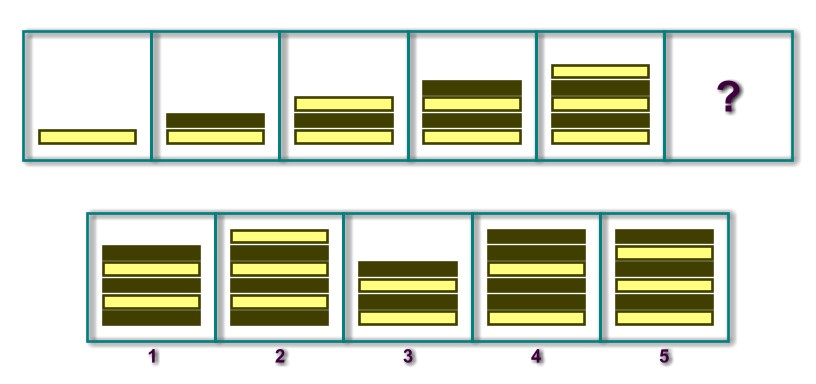The Wechsler Intelligence Scale for Children (WISC) test is often used as an entrance exam for gifted and talented programs for determining cognitive strengths and weaknesses, and is individually administered, usually by a psychologist.
This comprehensive, clinical instrument assesses the cognitive intelligence of children aged 6 years 0 months through 16 years 11 months. The major difference between how the test is given to each age is the starting point of the test; older kids will start at more difficult sections of each subtest. The WISC-V is the updated version which has more interpretive power, is more user-friendly and is also more efficient.
Testingmom.com helps prepare your child for the WISC-V test by providing challenging questions and games, and by making learning interesting and fun for your six-year-old! We have 100’s of practice tests and games that will fully prepare your child for the WISC-V. Below are a couple of examples of our practice questions.
1. Fluid Reasoning-Serial Order Matrix Question:
Do you see the figures inside these boxes? They form a pattern. Choose the figure in the answer row below that continues the pattern.


Answer: 5 – new bar is added each time in an alternate color.
2. Verbal Comprehension -Similarity Question:
Ask your child each question out loud.
How are winter and spring alike?
Answer: Both are seasons.
3. Visual Spatial Reasoning – Visual Puzzle Question:
Subtest measures your child’s ability to analyze and synthesize visual-spatial information. Within 30 seconds, your child views a completed puzzle, then chooses the 3 pieces that, when combined, make up that puzzle. In some cases, 1 or more of the pieces will need to be “mentally rotated” to fit into the puzzle.
Parent Instructions
Parent, say to your child: “Look at the shape on top. That is a completed puzzle. Choose the 3 pieces below that combine to complete the puzzle.”
-As the puzzles get harder, your child may have to mentally rotate or flip 1 or more puzzle pieces to make it fit into the puzzle.
-Your child’s responses can be in any order.
-Your child can point to or say out loud the numbers that make up her answers.
-Your child must select 3 pieces. In some cases, 2 pieces might complete the puzzle, but that isn’t the correct answer. There will always be 3 pieces that combine to make up the puzzle.
*On the test, students have 30 seconds to answer. Timing starts from the end of the question asked. When you are practicing this skill, don’t worry about the timing. Your child will get faster with practice. Just know that this is a timed part of the test.
Answer:1,2,3
